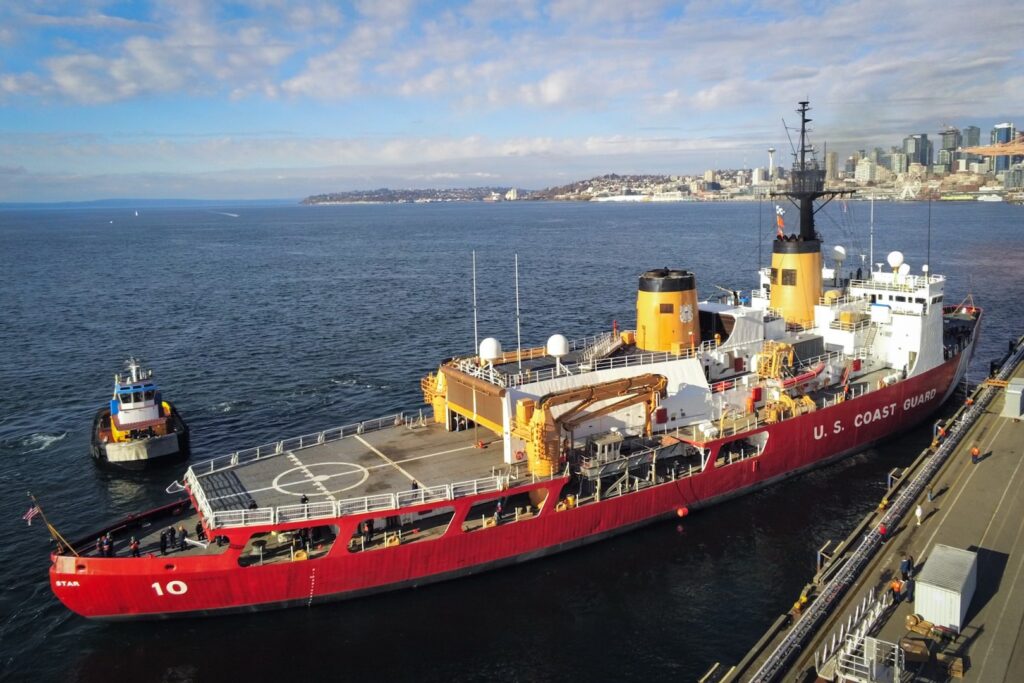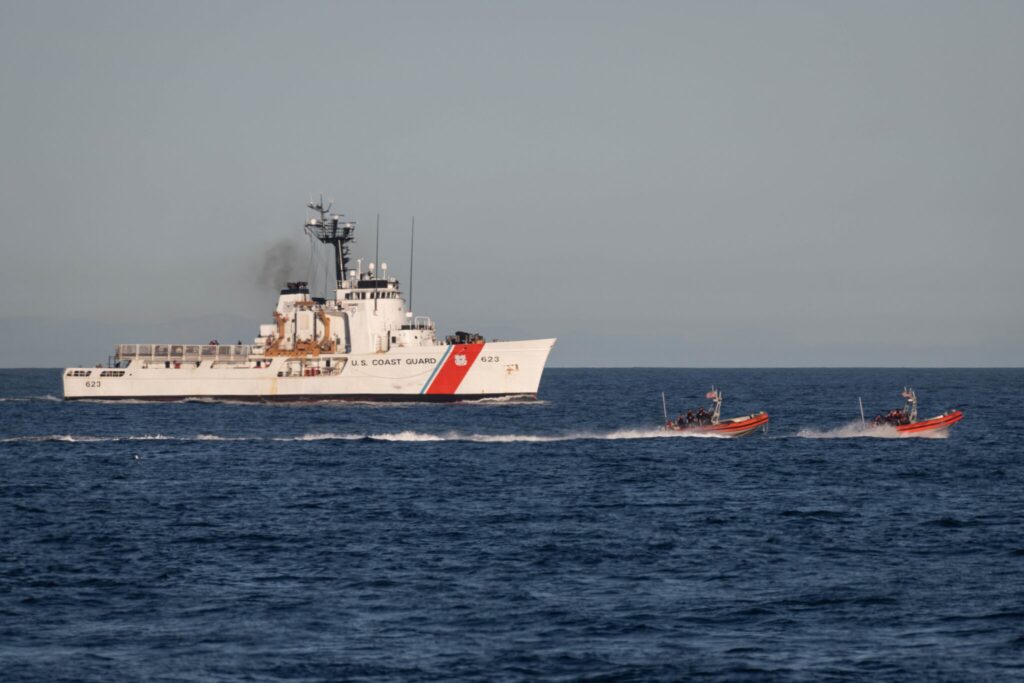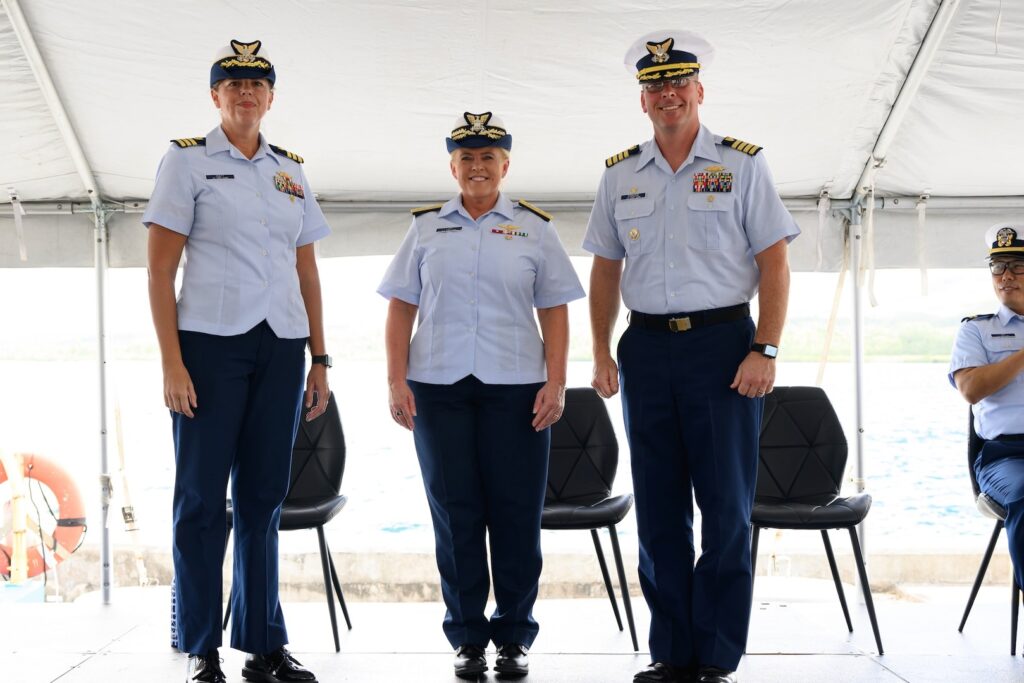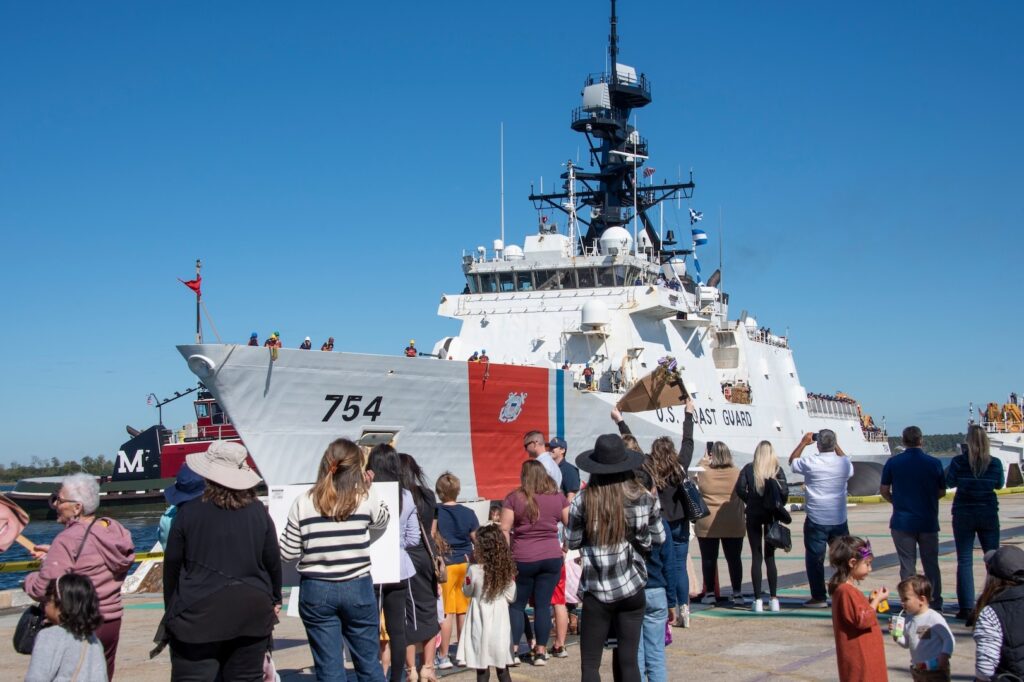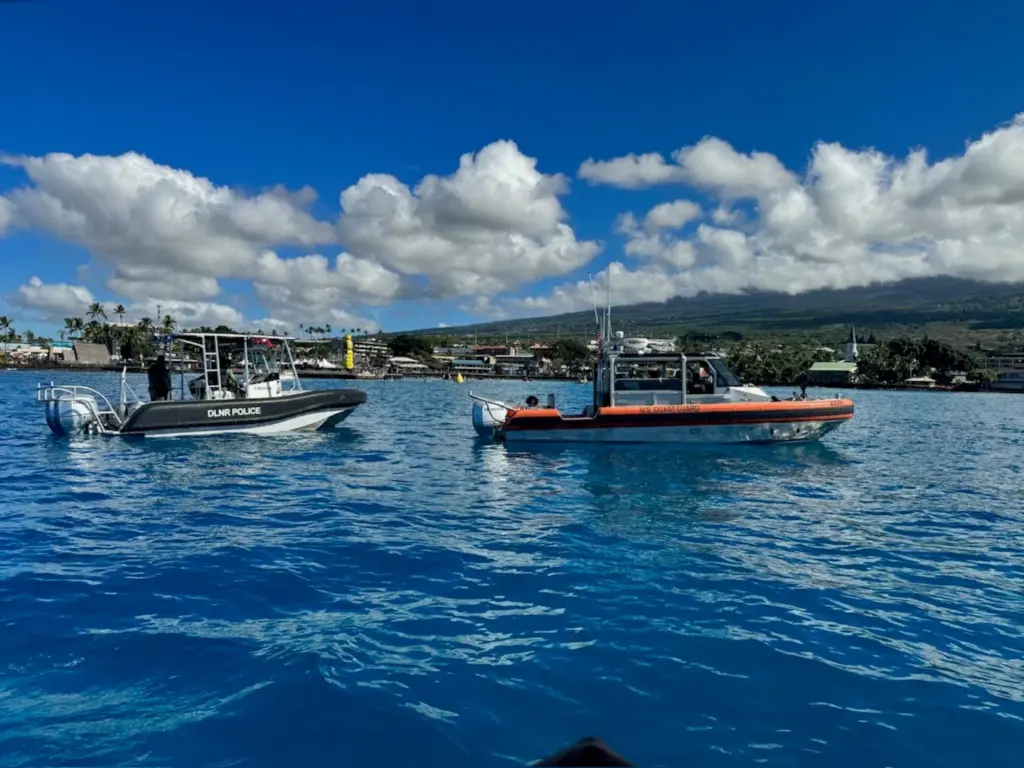USCGC Myrtle Hazard completes successful patrol emphasizing community commitment in CNMI
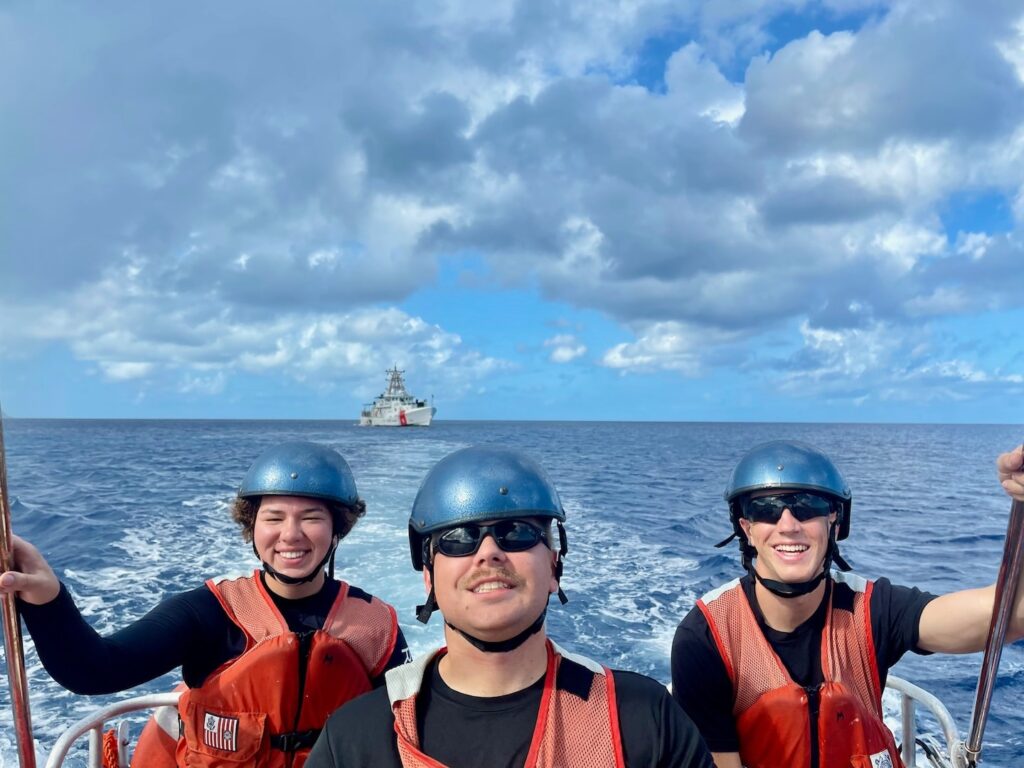
Release from U.S. Coast Guard Forces Micronesia/Sector Guam
*****
Nov. 15, 2023
SANTA RITA, Guam — The USCGC Myrtle Hazard (WPC 1139) crew successfully completed a multifaceted patrol from Oct. 16 to Nov. 5, 2023, underscoring the Service’s unwavering commitment to the community and partners in the Commonwealth of the Northern Mariana Islands (CNMI).
During this period, the cutter’s crew achieved several key objectives, including the delivery of vital donations and supplies, and facilitating critical wellness checks in the wake of Typhoon Bolaven.
Lt. Jalle Merritt, commanding officer of the Myrtle Hazard, expressed pride in her crew’s accomplishments, stating, “The value and impact of our efforts in the CNMI are a testament to the dedication and skill of our personnel. We are honored to serve these communities and contribute positively to their resilience and well-being.”
Community Support and Disaster Response
In a joint effort with Guam Animals in Need (GAIN), the Myrtle Hazard team ensured the timely delivery of 500 lbs. of dog food to support animal rescue initiatives in Rota and Tinian. This gesture highlights the U.S. Coast Guard’s broader commitment to supporting local communities and non-governmental partners. In addition, they delivered supplies to the U.S. Marine Corps in Tinian.
Moreover, the cutter crew played a pivotal role in transporting the CNMI Northern Islands Mayor, Val Taisakan, enabling essential post-storm wellness checks and the distribution of necessary supplies to Agrihan and Pagan residents. This timely intervention, following Typhoon Bolaven, was critical in assessing and addressing the immediate needs of the island communities.
Capt. Nick Simmons, commander of U.S. Coast Guard Forces Micronesia/Sector Guam, emphasized the humanitarian nature of the U.S. Coast Guard’s mission. “Our service to the community goes beyond maritime safety and security. It’s about building strong relationships and being there for our partners, especially in times of need.”
Training and Maintenance Achievements
Alongside these community-focused initiatives, Myrtle Hazard personnel diligently conducted shipboard training, encompassing navigation and damage control drills. This training ensures the crew’s preparedness for a wide range of maritime operations and emergencies. The cutter’s engineering team also successfully completed repairs to four maintenance and casualty items, reinforcing operational readiness.
The Myrtle Hazard’s most recent patrol reflects the U.S. Coast Guard’s enduring commitment to serving and protecting the communities within its area of responsibility. The successful completion of this patrol not only demonstrates operational excellence but also reinforces the humanitarian values at the core of the U.S. Coast Guard’s mission.
About the U.S. Coast Guard Cutter Myrtle Hazard
The USCGC Myrtle Hazard is a 154-foot Sentinel-class cutter homeported in Guam. It plays a vital role in maritime law enforcement, search and rescue, and homeland security operations in the region.
